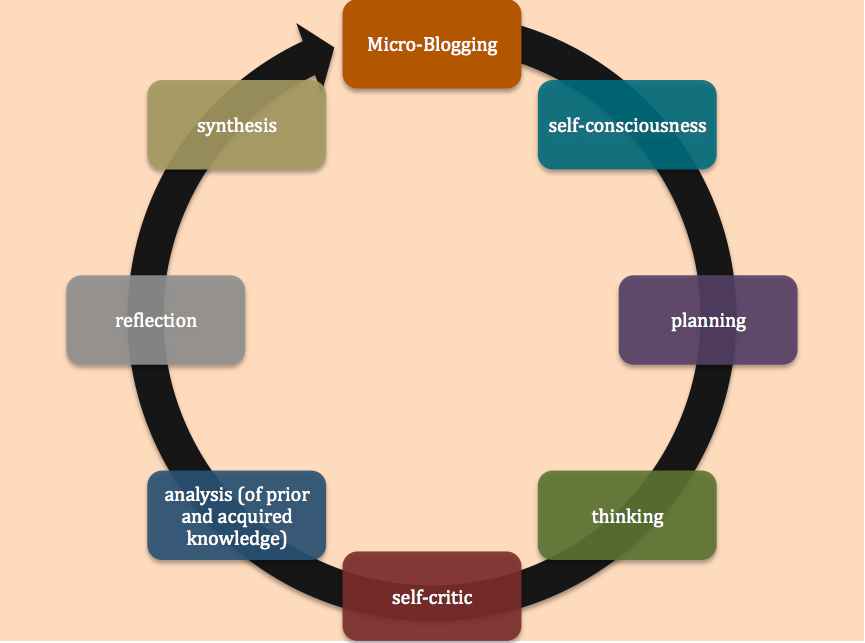Learning in 140 characters?
140 characters? Can learning really occur when you are limited to just 140 characters to express your view(s)? A simple answer is yes, the key being the synthesis of the vast knowledge and information you have and condensing it to only 140 characters or less.
Speaking from my experience of using Twitter for sometime now. Whenever I engage in a Twitter discussion I have really had to find a balance of what I am trying to put across to others following me. Finding the balance requires a great deal of thinking, self-critic and consciousness, planning, analysing exiting knowledge and acquired knowledge (other resources available on the net and elsewhere), reflection (knowledge and self-experience) and synthesis (construct).

One may not have these skills to begin with but the use of a tool like Twitter and the nature of it's use will surely enable one to work on it. The important question being how to use a tool such as Twitter effectively with students? My though on this is, rather then looking at Twitter as a teaching tool, look at it as a tool for nurturing community of learners, facilitating and creating an environment that enables students to collaborate and communicate. The fallout from this process is likely to be the skills outlined in the diagram. The approach is likely to take a long time to establish before it starts yielding some results.
For a short time use in classroom maybe for a semester or a short course, I just came across a good case of Twitter in learning (Problem-based learning scenario), refer to this link: http://langwitches.org/blog/2009/12/04/csi-twitter-crime-scene-investigation/. In a nutshell, a skeleton is found on school grounds and students now have to find what animal it came from. Three options of achieving this is outline in the blog post, the last being putting it to the Twitter community. The result, within 3 hours there were over 50 Twitter responses with pictures linking to Flickr and other resources to justify the animal of choice. A GREAT learning opportunity for students. They would have learned more then just this animal in the process!
Twitter could also be encouraged as a back-channeling mechanism for activities in class or outside. A classic example, my colleagues are attending a conference in Auckland that I couldn't be a part of, but the back-channeling from the event has kept me informed, topped off with discussions and critique on Twitter, refer to the images below:
The twits have a good dose of questions, humour, good mix of images and videos from the events, and links to appropriate research that may have been done elsewhere.
Here is a rubric for assessing students on Twitter: http://blogs.educationau.edu.au/ksmith/2009/10/21/assessing-learning-with-web-20-twitter/
A good read, SMS and Twitter in education: http://www.sciencedaily.com/releases/2009/12/091210162224.htm
Off the herald this morning: Twitter shows it power: http://www.nzherald.co.nz/technology/news/article.cfm?c_id=5&objectid=10615430
Another good read with links to possible use of Twitter in education: http://www.collegeathome.com/blog/2008/05/27/twitter-for-librarians-the-ultimate-guide/
Updated 5/11/2010
Study finds Twitter improves student engagement (http://mashable.com/2010/11/04/twitter-student-engagement/):

